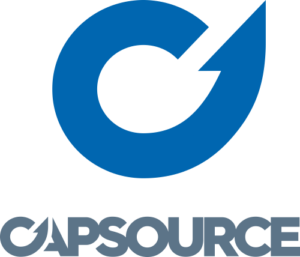It’s much easier and less expensive to find a loan option for a residential rental property like a house or a duplex compared to a large apartment building or commercial property. If you’re shopping around for a rental property loan online, you can get a free rate quote from an experienced mortgage professional on Stessa.
Here are some of the options to look at when you need a loan for buying a rental property or refinancing an existing mortgage:
1. Conventional
Conventional or conforming loans are mortgages that most people are familiar with. They are offered by traditional lenders like banks or credit unions, and also by mortgage brokers who work with a variety of lenders and can help you find the best deal.
Interest rates are usually lower than other options provided you have a good credit score, and down payments may be less than 25%. Conforming loans must meet Fannie Mae or Freddie Mac guidelines. While Fannie and Freddie allow up to 10 mortgages by the same borrower, banks often set a lower limit of around four loans total.
2. FHA
Federal Housing Administration (FHA) loans are also offered by traditional lenders and mortgage brokers. Credit score requirements and down payments are usually lower than a conventional loan, and income from an existing rental property can be used to help qualify.
FHA loans are a good option for multifamily property investors looking for a rental property loan for a new purchase, new construction, or renovating an existing property. To help qualify for an FHA multifamily loan, the investor will need to use one unit as a primary residence for at least one year.
3. VA
Veterans Affairs (VA) multifamily loans are a third option for rental property loans offered by banks, credit unions, and mortgage brokers. Mortgages backed by the U.S. Department of Veterans Affairs are available to active-duty service members, veterans, and eligible spouses.
There are several benefits to using a VA loan for a rental property if you qualify. There is no minimum down payment or minimum credit score, and you may be able to purchase up to seven units. However, one of the units must be your primary residence.
4. Portfolio
Portfolio loans are mortgages on individual single-family or small multifamily properties by the same lender. Although each property has its own loan, the mortgage brokers and private lenders who offer portfolio loans may offer the borrower a ‘group discount’ for multiple loans.
Loan terms such as interest rate, down payment, credit score, and loan length can be customized to fit the specific needs of the borrower. However, because portfolio loans can be easier to qualify for when an investor has multiple properties, there may also be higher fees and prepayment penalties.
5. Blanket
A blanket loan is a good option for real estate investors who want to purchase several rental properties and finance all of them using a single loan or refinance a portfolio of existing rental homes. Mortgage brokers and private lenders are two sources for finding a blanket mortgage loan for any type of income-producing property.
Interest rate, length of loan, down payment, and credit score vary from lender to lender, and loan terms can often be customized to meet the needs of the borrower and lender.
Rental properties in a blanket loan are usually cross-collateralized, which means that each individual property acts as collateral for the other properties. However, you can ask for a release clause that allows you to sell one or more of the group of properties under the blanket loan without having to refinance the remaining properties.
6. Private
Private loans are offered by experienced real estate investors and business people pool their capital and offer debt financing to rental property owners. Because these private investors know how the real estate business works, they often offer loan terms and fees customized to match the deal potential and the experience of the borrower.
Some private lenders may even take a small equity position in the project and accept future potential profits in exchange for lower fees or interest rates. If the investment performs according to plan, private lenders can also be an excellent source of funding for future rental property investments.
7. Seller Financing
Sellers who own a property free and clear (or with very little mortgage debt) are sometimes willing to act as a lender. By offering owner financing or a seller carryback, property owners who finance a sale to the buyer can generate interest income and earn a regular monthly mortgage payment instead of receiving the sales proceeds in one lump sum.
Seller financing can be a good option for owners who want to spread out capital gains tax payments over the life of the loan as an alternative to conducting a 1031 tax-deferred exchange. However, because the seller is offering the mortgage, borrowers should expect similar underwriting requirements such as credit checks and minimum down payment.
8. HELOC
A home equity line of credit (HELOC) and a home equity loan are two options for pulling money out of an existing property to use as a down payment for another rental property loan. This strategy is an example of the waterfall technique where investors use the cash flow and equity build-up from existing rental properties to fund future purchases.
A HELOC acts as a line of credit secured by the equity in an existing property that an investor can tap into at any time, and repay the loan with monthly payments similar to the way a credit card works. On the other hand, a home equity loan is a second mortgage that provides funds to the borrower in one lump sum.
With both a HELOC and a home equity loan lenders generally set a borrowing limit of between 75% – 80% of the property equity. Interest rates and fees may also be higher compared to doing a cash-out refinancing using a conventional loan.





